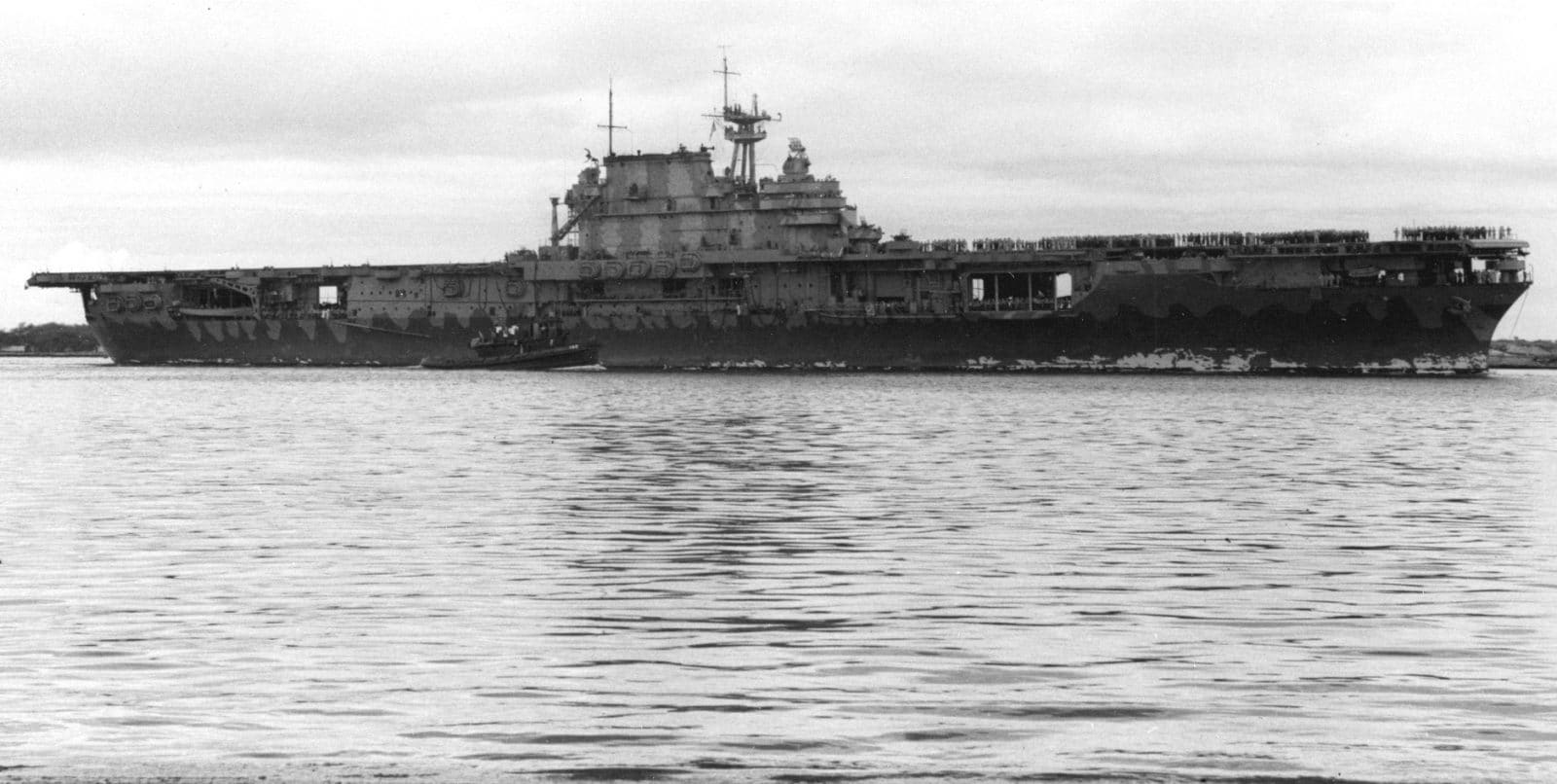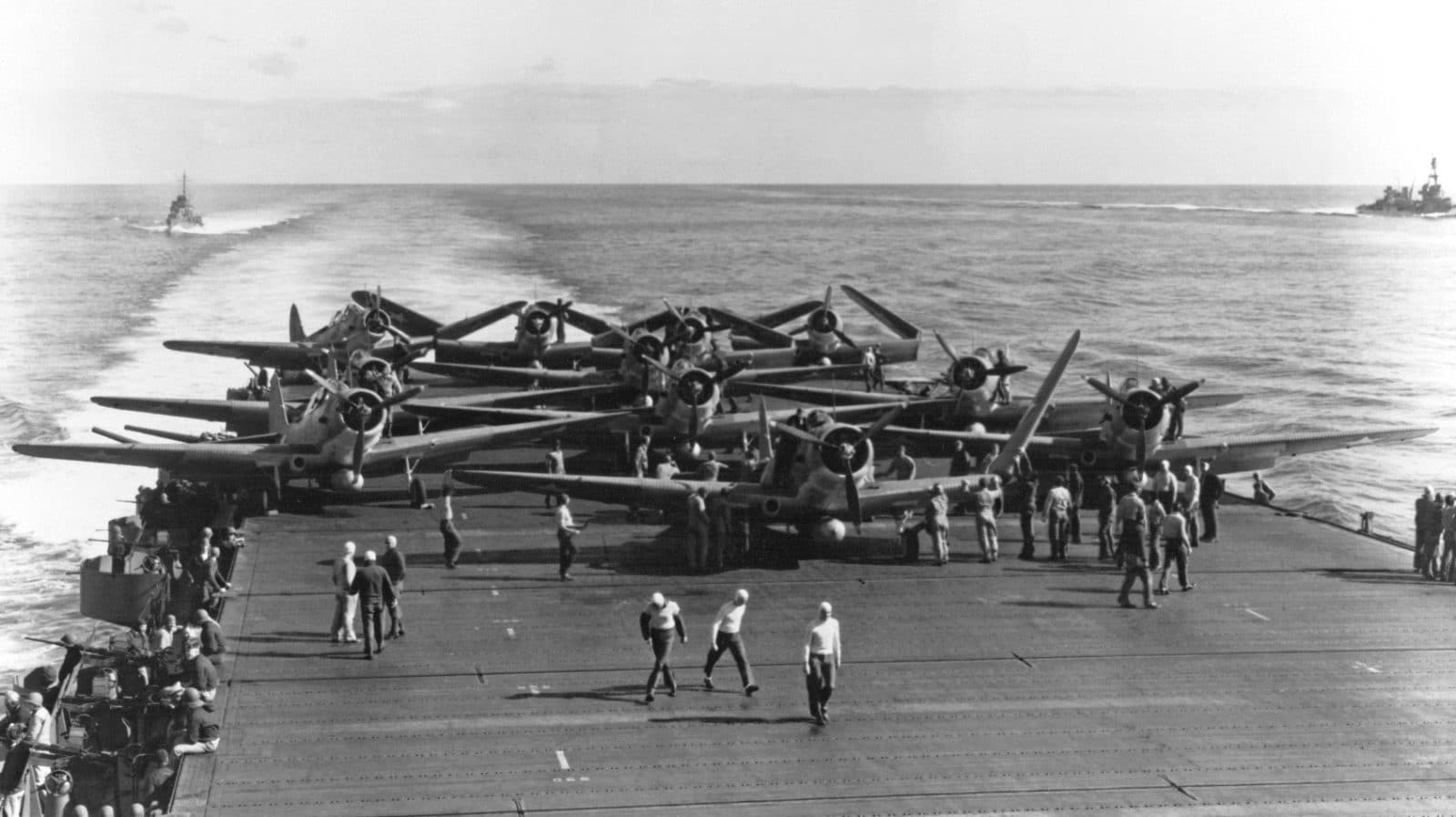Much of the footage used in the film “Torpedo Squadron 8” was shot aboard the US Navy aircraft carrier USS Hornet (CV-8) between the Japanese attack in Pearl Harbor on December 7th 1941 and the Battle of Midway beginning on June 4th 1942. John Ford made the film as a tribute to the near total loss of the squadron during the Battle of Midway. He also produced a film using footage shot primarily on Midway atoll itself. Pilots and crews are featured heavily in Torpedo Squadron 8. The film was uploaded to YouTube by US National Archives.
[youtube id=”Pa6O5GjUonQ” width=”800″ height=”454″ position=”left”]
VT-8 lost every single one of their 15 Douglas TBD Devastator torpedo bombers and five of their six Grumman TBF-1 Avenger torpedo bombers at Midway. The squadron had sent a detachment to Norfolk to take delivery of the fleet’s first operational TBFs before leaving a still chaotic Pearl Harbor for “Point Luck.” The VT-8 TBF-1s operated from Midway’s Eastern Island. While the Douglas SBD Dauntless gets most of the credit for the victory at Midway, TBDs were part of the team that got it done. Only three VT-8 personnel were still alive after the battle: Ensign George “Tex” Gay (TBD pilot), Ensign Albert “Bert” Earnest (TBF pilot), and Radioman 2nd Class Henry Ferrier (TBF crew). In the film, the medal prominently shown before the individual personnel footage is the Navy Cross.

After the Battle of Midway, VT-8 was reconstituted and embarked aboard USS Saratoga (CV-3). The squadron’s luck didn’t get much better because when Sara Maru took a Japanese torpedo in her starboard side on August 26th 1942, VT-8 was sent to work out of Henderson Field on Guadalcanal. The squadron remained on the Canal until November of 1942 when the original VT-8 was disestablished. Another VT-8 was established later in 1943 and embarked on the Essex-class carrier USS Bunker Hill (CV-17) throughout the remainder of the war.

At the Battle of Midway only six of the 41 TBDs launched from the carriers Yorktown (CV-5), USS Enterprise (CV-6), and USS Hornet (CV-8) to attack the Japanese carrier force returned to their carriers- two from VT-3 to the Yorktown, four from VT-6 to the Enterprise, and none from VT-8 to the Hornet. After the battle the Navy, with TBFs becoming available quickly, withdrew the remaining TBDs in service and used them for a short time as trainers and submarine spotters on the Atlantic coast. By 1944 there were no operational TBDs in Naval service.

